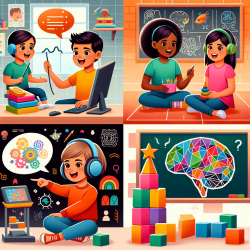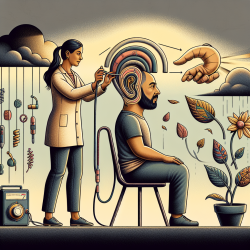Speech therapists and special educators have long recognized the complexity of communication disorders, such as stuttering. Beyond the physical challenges, the social and psychological impacts play a significant role in the experiences of individuals who stutter (PWS). A pivotal aspect of therapy, often overlooked, is the influence of nonverbal communication—specifically, listeners' facial expressions—on PWS. A study titled "The Impact of Listeners' Facial Expressions on the Perceptions of Speakers Who Stutter" by William S. Yovetich and Susan Dolgoy offers insightful findings that can enhance therapy practices.
The study explores how the facial expressions of listeners affect PWS's perceptions and feelings about their speech. The research reveals that negative facial expressions from listeners are perceived less favorably by PWS, influencing their self-perception and possibly exacerbating communication difficulties. This insight is crucial for speech therapists, as it underscores the importance of creating a supportive and positive communication environment during therapy sessions.
Implementing the outcomes of this research into practice involves several strategies:
- Training in Nonverbal Communication: Therapists can benefit from training in controlling their nonverbal cues, ensuring their facial expressions convey positivity and encouragement. This training can extend to teaching PWS to interpret listeners' facial expressions accurately, reducing misconceptions and anxiety about negative feedback.
- Creating Positive Therapy Environments: The therapeutic setting should be a safe space where PWS feel supported and confident. Therapists can achieve this by maintaining positive facial expressions, using verbal affirmations, and encouraging PWS to express their concerns and experiences.
- Involving Peers and Family: Educating family members and peers about the impact of their nonverbal communication on PWS can foster a more supportive home and social environment. Workshops or counseling sessions that include significant others in the therapy process can be beneficial.
- Encouraging Further Research: While the study provides valuable insights, it also highlights the need for further research in this area. Speech therapists and educators are encouraged to contribute to the growing body of knowledge by conducting their studies or implementing research findings into practice and sharing the outcomes.
The findings from Yovetich and Dolgoy's study have significant implications for the field of speech therapy and special education. By understanding and addressing the impact of nonverbal communication on PWS, therapists can enhance the effectiveness of their interventions and support individuals in achieving better communication outcomes.
For therapists and educators looking to deepen their understanding of the interplay between nonverbal communication and stuttering, the original research paper provides a comprehensive overview of the study's methodology, findings, and implications. To read the original research paper, please follow this link: The Impact of Listeners' Facial Expressions on the Perceptions of Speakers Who Stutter.










